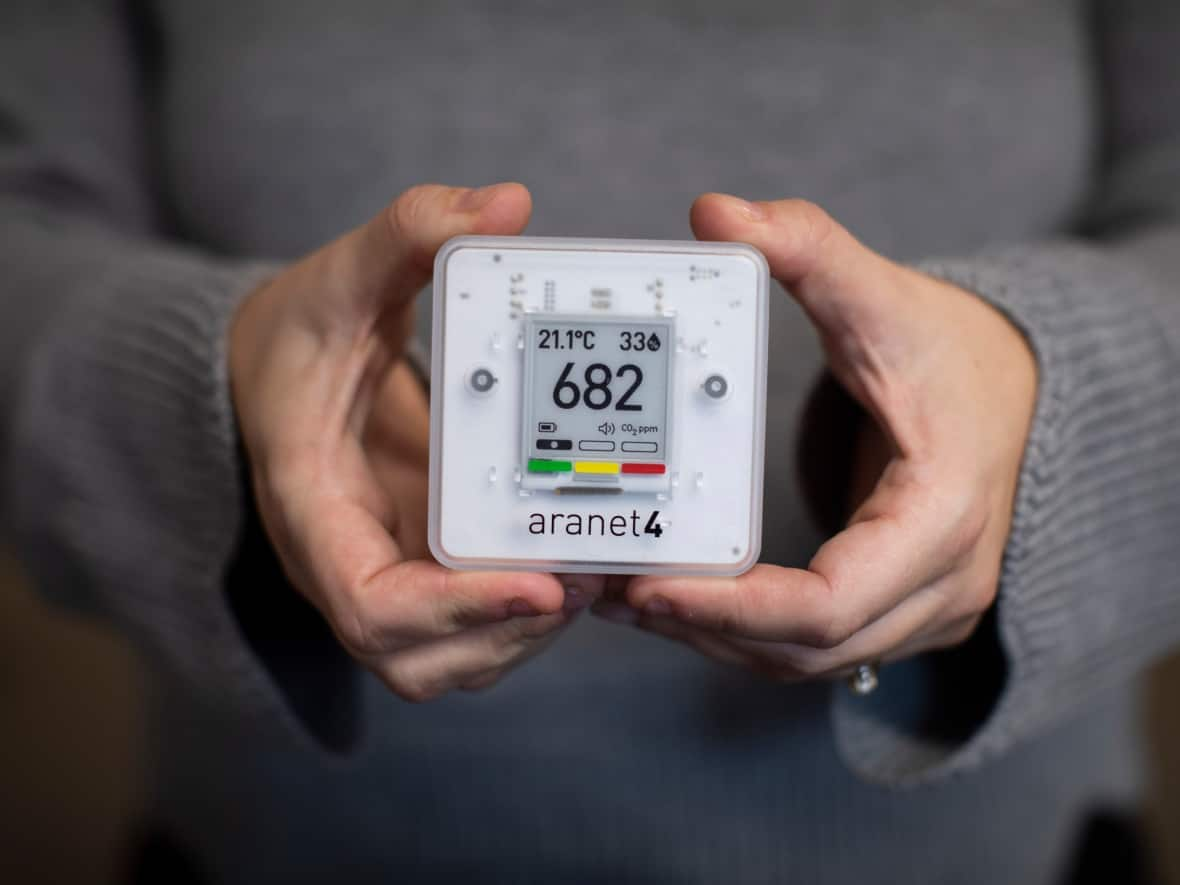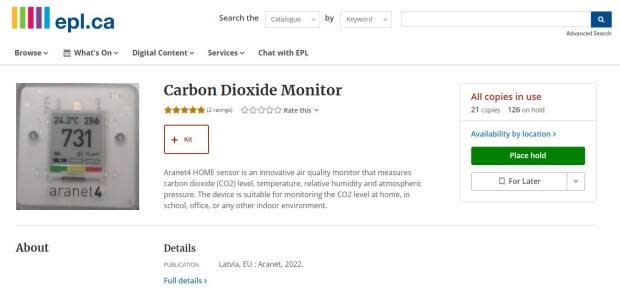Edmonton's public library starts lending program for CO2 monitors to measure air quality

Edmonton's public library has joined a growing list of libraries across the country lending carbon dioxide (CO2) monitors to the public.
The Edmonton Public Library launched the program last month with 21 kits of the Aranet4 home sensor. The devices, which have a colour scale for safety, can be used to track air quality.
"[CO2 monitors] picked up popularity during the pandemic, some people were using them as a way ... of somewhat measuring their risk of potentially contracting COVID," Beth Kilfoy, librarian for non-traditional collections, said in an interview Wednesday.
She said the library was interested in acquiring the devices as customer demand grew and borrowers asked the library to start a lending program.
"We had a lot of interest from the community and there was a local group here who eventually ended up coordinating a very large donation from a generous community member," Kilfoy said.
The sensor is an indoor air quality monitor that measures CO2 level, temperature, relative humidity and atmospheric pressure. Measurements in the green zone are ideal while measurements in the yellow and red zones indicate concerning CO2 levels.
The device also provides an update with the amount of carbon dioxide in the air, which is measured in parts per million (ppm).
Public health tool
Pediatrician and air quality advocate Dr. Tehseen Ladha said the lending program is a great initiative.
"This is one of the tools that we can use in our arsenal of public health to help us decide whether an indoor gathering is high risk for viral transmission," she said.
"It's just a great way to empower the community to learn more about the importance of clean air."
The range of safety detected varies depending on the device. Ladha said a range between 600 ppm and 1,000 ppm is an ideal reading, with a lower level being favoured.
"That tells us there's fresh air circulating at a higher rate," Ladha said. "When we get to above 1,000, to about 1,400 parts per million ... we're looking at not as good ventilation."

Higher CO2 levels can impact brain functioning and increase the possibility for viral transmission, something Ladha said the monitors can be useful for considering.
"They don't actually detect virus in the air but they're a proxy measurement for air quality," Ladha said.
She said CO2 is used as a measurement because the amount in the air gives an indication of how much fresh air exchange is occurring between an indoor space and the outdoors.
Environments like hospitals are constructed to allow for high ventilation, which can be also be measured in air changes per hour.
A setting like an operating room may have a minimum of six air changes.
But Ladha said air quality can fluctuate in other public settings like schools and private settings like homes.
"In a house, there might be maximum of two air changes per hour, so that means all of the air in the room isn't changed over very quickly with fresh air," she said.
"Whatever toxins are in the air ... they're not getting changed out for fresh air as quickly, they're building up."
EPL becomes one of the latest libraries to join others in cities like Toronto, Vancouver, Hamilton and Ottawa.
As of mid-December, there were over 120 library holds placed on the devices. Borrowers can place a hold online and pick up the device from any branch location in the city.


